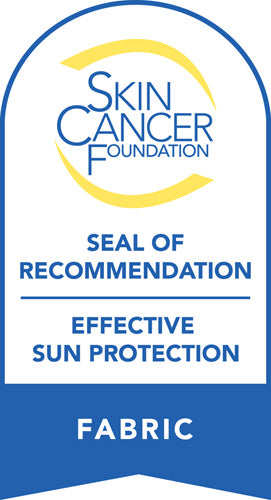Melanoma Awareness Month: 9 Skin Cancer Facts You Need to Know
Ah, sunshine! We love spending time in the sun and soaking up vitamin D. But, if you aren't careful, that sweet sunshine can cause severe damage to your skin.
We're talking about skin cancer, which is most often caused by too much exposure to UV rays. Skin cancer can be treated, but it can also be deadly.
Melanoma is a type of skin cancer that can spread quickly throughout the body. It is dangerous and deadly, which is why melanoma cancer awareness is so important.
In honor of melanoma awareness month, we have compiled nine skin cancer facts every person should know. Let's dive in.
1. Skin Cancer Is the Most Common Cancer in America
While skin cancer may be talked about less than breast or prostate cancer, it is still the most prevalent type of cancer in America.
Risk factors of developing skin cancer include:
- Blonde or red hair
- Light skin tones
- Skin that easily burns or freckles under the sun
- Blue or green eyes
- Family history of skin cancer
- A large number of moles throughout the body
- Spending extended time under the sun without protection
Skin cancer in the United States is more common than you might think. Medical professionals estimate one in five Americans will develop skin cancer in their lifetime.
2. Men Have a Higher Risk of Melanoma
According to The Skin Cancer Foundation, melanoma accounts for six percent of cancer cases in men and five percent of new cancer cases in women.
Melanoma is more likely to emerge in men under 49 than any other type of cancer.
Melanoma often forms on parts of the body such as the scalp or back of the torso, making it difficult to spot. Men tend to see a doctor for checkups less frequently than women, which leads to a delay in diagnosing and treating skin cancer.
3. Melanoma Is More Common in White People
Individuals with white skin have the highest risk of developing any form of skin cancer. Melanoma, in particular, is 20 times more common in white people as opposed to African Americans.
4. People Die From Skin Cancer Every Hour
Over 9,500 US citizens are diagnosed with skin cancer every day. Two people die from skin cancer in America every hour.
Lack of melanoma awareness prevents people from recognizing the signs of skin cancer. Less awareness leads to slower diagnosis and higher skin cancer fatality rates.
Common signs of skin cancer include changes to the shape, size, or color of skin lesions like moles and freckles. It can also include the appearance of a new skin growth, a sore that doesn't heal, or itching near an existing lesion.
5. Frequent Sunburn Raises Your Risk of Skin Cancer
Repeated sunburn increases your risk of developing skin cancer, especially melanoma.
UV rays from the sun penetrate the skin to trigger tumor-suppressor genes. The genes prevent cells from repairing and can accelerate cancer progression.
People who spend a lot of time in the sun have a higher risk of experiencing frequent sunburn.
Skin damage builds up, starting with your first sunburn. The more frequently you burn, the higher your risk of developing skin cancer. Five or more sunburns doubles your risk of melanoma.
The best way to protect your skin from the sun and prevent skin cancer is to wear protective clothing and apply 30 broad spectrum sunscreen or higher to protect the skin from harmful UVA and UVB rays. You should be taking action to protect your skin all year round, not just during the summer months.
6. More People Develop Skin Cancer than Lung Cancer
The rate is higher for people who tan to develop skin cancer than smokers to develop lung cancer.
Tanning, whether naturally or artificially, is dangerous if you don't protect your skin. Lathering on a waterproof SPF 30 sunscreen or giving your body a break from the sun every hour can do wonders in stopping skin cancer from forming.
7. Shade Doesn't Equal Protection
Just because you are seeking shade doesn't mean UV rays aren't hitting your skin. UV radiation can indirectly access your skin by bouncing off surrounding surfaces.
Light-colored surfaces have the highest risk of reflecting UV rays. They include:
- Sand
- Concrete
- Ice and snow
- Water
- Grass
That is why people need to take more action than just sitting under a tree or umbrella when they want to escape the sun.
Reapply sunscreen every two hours or more frequently if you have been swimming. Wear UV protective clothing that provides immediate sun protection no matter where the rays are coming from.
8. Tanning Beds Increase Your Risk of Melanoma
If you want to tan, do it naturally. Indoor tanning increases your risk of developing melanoma before age 35 by 75%.
Tanning booths project unnaturally high levels of UV rays onto the body. The average amount of UVA radiation coming from tanning booths is four times as strong as what is emitted by the sun, even on a sizzling summer day.
Artificial tanning is so dangerous that some countries, like Brazil and Australia, have banned tanning salons.
9. Intense Training Can Lead to Skin Cancer
High-performance athletes undergoing intense training may have an increased risk of developing skin cancer.
Performing strenuous athletic training for long durations outside weakens the immune system. A weakened immune system makes it easier for skin cancer to develop and spread throughout your body.
If you are training for a competition or marathon, take care of your body.
Drink plenty of water, wear protective clothing while training outside, and give your body time to rest between workouts. Eat a vitamin-rich diet to keep your immune system strong and prevent skin cancer from developing.
Melanoma Awareness Month: Protect Your Skin
Skin cancer, especially melanoma, can be deadly. Taking the time to familiarize yourself with the signs of melanoma and skin cancer makes it easier for you to spot when something is wrong.
May is melanoma awareness month, but you need to protect your skin all year long. That's where we come in.
Our UV protective clothing makes it safe for you to spend time under the sun. We provide clothing and accessories that keep men, women, and children safe from skin cancer.
Start browsing our collection of outdoor apparel now.



